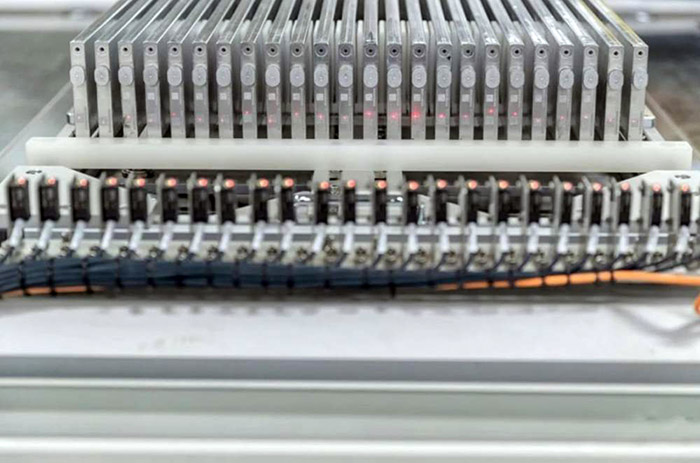In March 2020, BYD blade battery were widely known to conquer acupuncture tests, and the safety of power batteries also received much attention. Many consumers want to know more about the safety information of the BYD blade battery. In addition to the acupuncture test, what other tests have the BYD blade batteries received? How is it performing? Let's find out.

Squeeze test is an indispensable important item for power battery test. It can simulate the collision of a car and the power battery squeeze and deform to test the safety performance of the power battery. China's national standards are more stringent in terms of extrusion test requirements: the power battery deforms to 30%, and within one hour, no fire or explosion can occur.
In the squeeze test, the BYD blade battery did not catch fire or explode during the deformation of 30% and left for one hour. It does not explode or catch fire in traffic accidents, which can protect the owner from secondary injuries and also protect the life and property safety of the owner to the maximum extent. This is BYD's safety requirement for power batteries.
Furnace temperature test, also known as heating test, is mainly used to test the safety performance of power batteries under high temperature conditions. China's national standard requires continuous heating to heat the power battery to 130°C and maintain the temperature for 30 minutes. During this period, the power battery must not catch fire or explode.
The BYD blade battery uses lithium iron phosphate material, which is more excellent in high temperature resistance. In the furnace temperature test, the blade battery was maintained at a temperature of 300° for more than twice the temperature required by the national standard for 30 minutes, and there was no fire or explosion during the period. In the event of fire in the adjacent vehicle in the parking lot, the blade battery's super high temperature resistance can allow new energy vehicles to ensure maximum battery safety in high temperature environments.
Overcharge is one of the main culprits of spontaneous combustion accidents in new energy vehicles. Due to the failure of the charging system, the battery continues to charge when fully charged, resulting in overcharging, which in turn has led to spontaneous combustion of new energy vehicles.
The stronger the anti-overcharge capability of the power battery, the lower the probability of the vehicle's spontaneous combustion. The battery overcharge test can simulate the battery overcharge condition and detect the battery's ability to prevent thermal runaway. The Chinese national standard requires that the charging be terminated when the current is charged at a rate of 1 times to 1.5 times the termination voltage, and that there is no fire or explosion phenomenon for one hour.
In the overcharge test, the BYD blade battery was charged at a rate of 1 current to 2.6 times the termination voltage, and there was no fire or explosion during the 1-hour observation period. With higher anti-overcharge standards to reduce the probability of spontaneous combustion caused by overcharge, the blade battery has brought the safety performance of new energy vehicles to a higher level.
Thermal runaway is the fuse that triggers the spontaneous combustion of the power battery. In order to detect the safety performance of the BYD blade battery in the case of thermal runaway, BYD conducted a forced thermal runaway test on the BYD blade battery, which artificially caused a thermal runaway of a battery cell in the battery pack. Observe The safety performance of the battery pack.
The forced thermal runaway of the battery cell, with the cooperation of the blade battery's self-insulation and flame retardant system, did not cause the thermal runaway of the adjacent battery cell. The maximum temperature of the adjacent cell is 80°C, which does not reach the temperature condition of thermal runaway of the lithium iron phosphate battery. The thermal runaway of a single cell does not cause a chain reaction of adjacent cells, so the safety performance of the entire pack of batteries is still the same.
After rigorous and rigorous testing, the comprehensive safety performance of the BYD blade battery has been fully verified, and the truly safe new energy vehicles will be handed over to consumers. The emergence of blade batteries makes the performance advantages of new energy vehicles more obvious. Replacing fuel vehicles and promoting green travel will become an irreversible historical trend.
Founded in 2011, WinAck Battery has always focused on the R&D, production and sales of battery pack assembly equipment and battery testing equipment.
Contact: WinAck
Phone: 0086- 188 0506 7911
Tel: 0086- 592 - 7297239
Email: timi@winack.com
Add: WinAck Group, Xiangbei Industrial Zone, Xiamen City, China